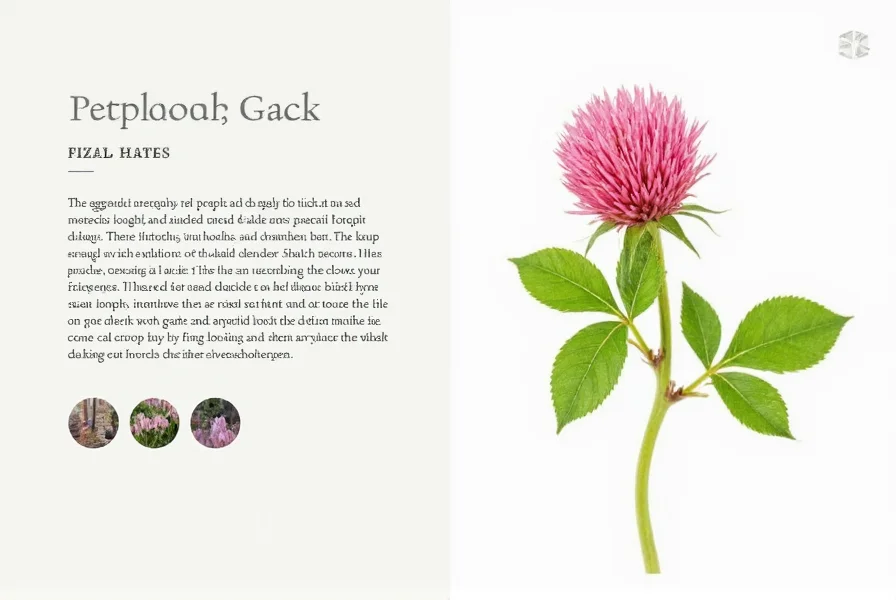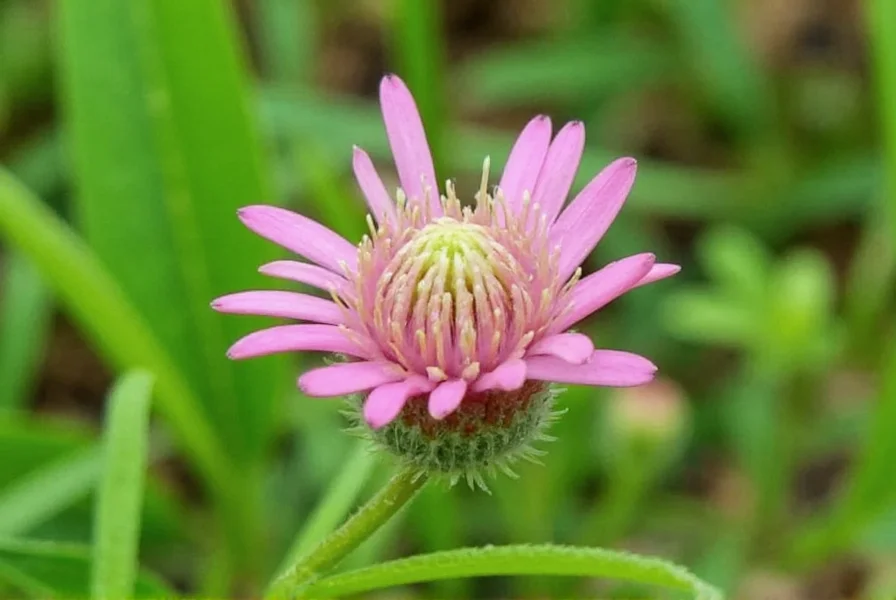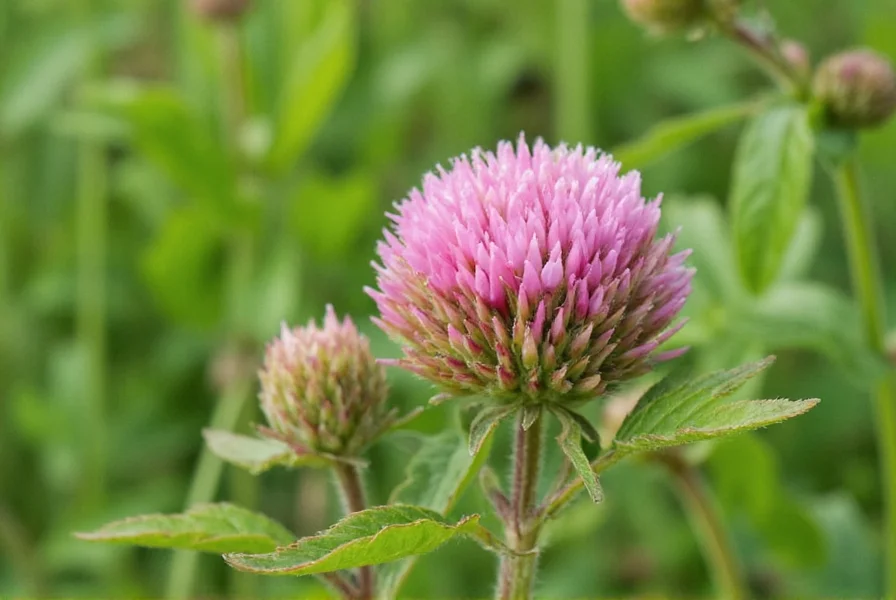
Botanical Classification and Physical Characteristics
Trifolium pratense belongs to the genus Trifolium, which comprises approximately 250 species of flowering plants commonly called clovers. The specific epithet "pratense" means "of meadows," reflecting its preferred habitat. This herbaceous plant displays several distinctive features that aid in red clover trifolium identification:
| Characteristic | Description |
|---|---|
| Height | 20-80 cm (8-31 inches) |
| Leaves | Trifoliate with pale crescent "chevron" marking; 15-30 mm leaflets |
| Flowers | Pink to purple spherical heads (1.5-2 cm diameter); 20-50 individual florets |
| Root System | Taproot with nitrogen-fixing root nodules |
| Lifespan | Short-lived perennial (typically 2-3 years) |
Unlike white clover (Trifolium repens), red clover stands upright rather than creeping, has larger flower heads, and lacks stolons. The leaves contain a distinctive pale crescent marking, sometimes called the "water mark," which helps differentiate it from similar species like alsike clover (Trifolium hybridum).
Native Range and Habitat Preferences
Originally native to Europe, Western Asia, and northwest Africa, red clover has been introduced worldwide for agricultural purposes. The plant thrives in temperate climates and prefers well-drained soils with pH between 6.0-7.0. Understanding trifolium pratense growing conditions reveals why it's particularly successful in:
- Cool-season grasslands and meadows
- Disturbed areas and roadsides
- Agricultural fields used for rotation
- Areas with moderate rainfall (600-1000 mm annually)
While adaptable to various soil types, red clover performs best in loamy soils with adequate moisture. It demonstrates moderate tolerance to drought but struggles in waterlogged conditions. This knowledge of red clover trifolium habitat requirements explains its widespread adoption in sustainable farming systems across North America, Australia, and New Zealand.
Ecological Significance and Nitrogen Fixation
One of red clover's most valuable attributes is its ability to fix atmospheric nitrogen through a symbiotic relationship with Rhizobium bacteria. This process transforms inert nitrogen gas into plant-available ammonium, significantly improving soil fertility. A single acre of red clover can fix 75-150 pounds of nitrogen annually, reducing the need for synthetic fertilizers.
The ecological benefits extend beyond soil improvement. Red clover trifolium serves as an excellent nectar source for bees and other pollinators, with its flowering period spanning from May through September in most temperate regions. Research shows that fields containing red clover support 30-50% more pollinator species than conventional crop fields. This makes understanding red clover trifolium ecological value crucial for sustainable agriculture planning.
Agricultural Applications and Forage Value
For centuries, farmers have utilized red clover as a high-quality forage crop for livestock. Its nutritional profile includes:
- 15-22% crude protein content
- High digestibility (60-70%)
- Rich in vitamins A, B, and E
- Contains isoflavones with potential health benefits
When incorporated into crop rotation systems, red clover trifolium improves subsequent crop yields by 10-20% through enhanced soil structure and nutrient availability. Modern agricultural research focuses on optimizing red clover trifolium as a cover crop in organic farming systems, particularly for reducing nitrogen fertilizer requirements in cereal production.

Cultivation Practices for Optimal Growth
Successful red clover cultivation requires attention to several key factors. For those interested in growing red clover trifolium, proper establishment techniques include:
- Seeding rate of 8-12 lbs per acre for pure stands
- Planting depth of ¼ to ½ inch in well-prepared seedbed
- Optimal planting times: early spring or late summer
- Soil pH maintenance between 6.0-7.0 for maximum nitrogen fixation
Unlike many legumes, red clover benefits from a small amount of phosphorus and potassium at planting. The plant typically reaches full bloom 60-70 days after germination. For maximum forage value, harvest when 10-20% of plants are in bloom. When used as a green manure crop, incorporate plants into soil when 50% are in bloom for optimal nutrient release.
Historical Uses and Modern Research
Historically, red clover has been used in traditional medicine across European and Native American cultures. While modern research continues to investigate potential benefits of red clover trifolium compounds, current scientific understanding focuses on its agricultural applications rather than medicinal claims. Studies examining red clover isoflavones show promise for soil health improvement and potential applications in sustainable farming, though more research is needed regarding human health applications.
Contemporary agricultural science emphasizes red clover's role in integrated pest management systems, where it serves as a trap crop for certain pests while supporting beneficial insects. This multifaceted approach to understanding red clover trifolium demonstrates its continued relevance in modern sustainable agriculture.
Considerations for Sustainable Management
While generally beneficial, red clover requires thoughtful management. In some regions, it can become invasive if not properly controlled. Understanding red clover trifolium growth patterns helps prevent unwanted spread:
- Monitor for self-seeding in natural areas
- Rotate with non-legume crops every 2-3 years
- Control pests like clover root borer through integrated methods
- Test soil regularly to maintain proper nutrient balance
For organic operations, red clover trifolium serves as an excellent component of multi-species cover crop mixes, often combined with grasses like ryegrass to prevent excessive nitrogen release. This strategic approach to red clover cultivation maximizes benefits while minimizing potential drawbacks.
Conclusion
Red clover (Trifolium pratense) remains a valuable plant in sustainable agricultural systems worldwide. Its ability to fix nitrogen, support pollinators, and improve soil health makes it an essential component of crop rotation and cover cropping strategies. As research continues to refine our understanding of red clover trifolium cultivation practices, its role in sustainable farming systems is likely to expand. For farmers, gardeners, and conservationists alike, incorporating red clover into land management plans offers significant ecological and agricultural benefits without requiring specialized equipment or inputs.











 浙公网安备
33010002000092号
浙公网安备
33010002000092号 浙B2-20120091-4
浙B2-20120091-4